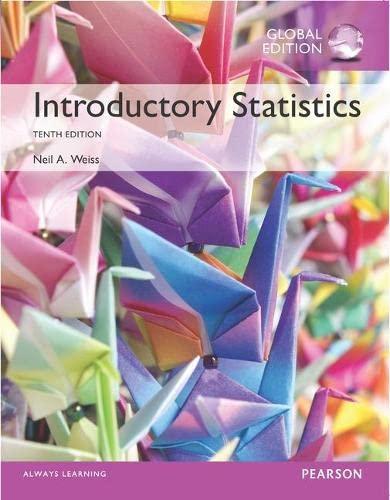The Hypergeometric Distribution. In this exercise, we discuss the hypergeometric distribution in more detail. When sampling is
Question:
The Hypergeometric Distribution. In this exercise, we discuss the hypergeometric distribution in more detail. When sampling is done without replacement from a finite population, the hypergeometric distribution is the exact probability distribution for the number of members sampled that have a specified attribute. The hypergeometric probability formula is P(X = x) = Np x N(1 − p)
n − x N n , where X denotes the number of members sampled that have the specified attribute, N is the population size, n is the sample size, and p is the population proportion.
To illustrate, suppose that a customer purchases 4 fuses from a shipment of 250, of which 94% are not defective. Let a success correspond to a fuse that is not defective.
a. Determine N, n, and p.
b. Apply the hypergeometric probability formula to determine the probability distribution of the number of nondefective fuses that the customer gets.
Key Fact 5.5-.- shows that a hypergeometric distribution can be approximated by a binomial distribution, provided the sample size does not exceed 5% of the population size. In particular, you can use the binomial probability formula P(X = x) =
n x
px
(1 − p)
n−x , with n = 4 and p = 0.94, to approximate the probability distribution of the number of nondefective fuses that the customer gets.
c. Obtain the binomial distribution with parameters n = 4 and p = 0.94.
d. Compare the hypergeometric distribution that you obtained in part
(b) with the binomial distribution that you obtained in part (c).
Step by Step Answer:






